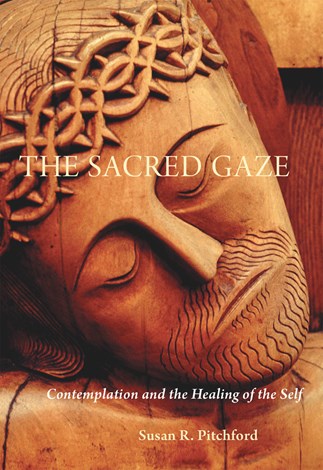
|
| |
|
Detail
 |
The Sacred Gaze: Contemplation and the Healing of the Self
|
| Category: |
Books > Spirituality > Spirituality Books
|
| Author/Artist: |
SUSAN PITCHFORD |
| ISBN / ID: |
9780814635681 |
| Publisher: |
Liturgical Press |
| Binding: |
PAPERBACK |
| Price: |
AU$34.95 |
|

 |
| Description: |
In The Sacred Gaze: Contemplation and the Healing of the Self, Susan R. Pitchford presents a look into the mirror that God lovingly holds up to each one of us. She asks the questions, “How do we become the people we are? What factors influence the content and meaning of our identities?” Her book provides a response to the contemporary age in which we live where there is, no time for deepening, and no time for wondering and amazement. Her main goal is to draw some living water from three sources – sociology, spirituality and personal experience.
In the first chapter, Pitchford lays a foundation by asserting the need for spiritual growth in our lives. Like Paul, we wish to see God face to face, yet our woundedness comes between us and God. By growing in God we are transfigured, which enables us to see ourselves as we really are, which is how God sees us. For the author, this gradual process of healing that leads to transfiguration has brought deep peace. Chapter two speaks of the woundedness of the self and the possibility for gift of healing that this offers. Embracing our own identity means rejecting the labels others place on us and the effects of social change, technology, and the mass media. Pitchford reminds us that healing is not just for the self, but also for the sake of relationships with others.
Chapter three explores the question, “The Healing of the Self: Does God Care?” Knowing who we really are and realising that God does care, enables us to seek freely the Kingdom of God. Chapter four carries forward this conversation by addressing the need for inner freedom from the fear and shame that makes us self-conscious even before God. This freedom allows us to relate to others from our “true self,” but it is a long process of growth which we do with the help of God in contemplation, along with help from resources such as counselling and spiritual direction.
Once she completes her consideration of human woundedness and the need for healing, Pitchford begins to speak of the “gaze” itself. While we know from Scripture that most people are not allowed to see God directly, the mystics throughout the history of Christianity have given us examples of what it means to purify ourselves and seek God’s face. The traditional three-fold path of purgation, illumination, and union is explored in the remaining chapters which touch upon self-emptying, active contemplation and the true self in the world. When the true self is known and known as God’s beloved, the way is open to radical freedom and joy.
The book is seen as a splendid general introduction to contemplative prayer.
Recommended uses for this book,
Students of theology and spirituality
Parish faith formation groups
Personal enrichment and ongoing formation |
|

 |
|
|
|
| |
Please
note: All
prices listed on this site are in Australian Dollars (AU$)
and are GST inclusive.
Prices
may change without notice. Postage & packing extra.
|
|



